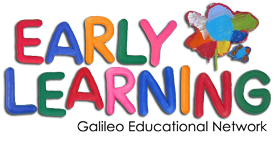
Hailed in 1991 by Newsweek Magazine as an exemplary model of early childhood education, The Reggio Emilia Approach is still highly regarded today. Its roots are in the Italian town of the same name, where at least 10 percent of its budget is devoted to early childhood education.
Many characteristics of this educational approach are rooted in Italian culture, from the open design of schools that facilitates interaction, to the value placed on collaboration between children, parents and teachers. The classroom is extended into the community – for example, in parks, hospitals, and art galleries. Parents and staff work together to plan and implement learning activities. Unlike most classrooms in North America, where teachers can be isolated in solitary classrooms that become the turf of the individual teacher, the Reggio Emilia approach is more collaborative – understanding and experiences are created through interaction and close relationships with peers, mentors, materials and ideas.
Reggio Emilia classrooms are known for its attention to detail. They are deliberately beautiful spaces, full of natural and created objects. Each area is a delight to the eye. Reggio educators also view children as strong, intelligent, creative, and most importantly, capable of the learning that takes place. The job of the teacher is to support this, and to challenge and empower children to use their natural curiosity to discover themselves and the world around them. An important role of the teacher lies in that of a learner alongside the children. The teacher will help children make decisions about the direction of study, and how what is learned will be illustrated and presented.
As a result of the Reggio Emilia approach, high levels of expression are reached by children in many forms of symbolic representation, particularly in the graphic arts. The emphasis on the use of language is also apparent in these classrooms, a direct result of the collaborative environment.
This YouTube video illustrates what a classroom looks like under the Reggio Emilia approach.
Working in the Reggio Way: A Beginner’s Guide for American Teachers
Wurm, J. P., Genishi, C., (2005), Working in the Reggio Way: A Beginner’s Guide for American Teachers. St. Paul, MN: Redleaf Press.
Bringing Reggio Emilia Home: An Innovative Approach to Early Childhood Education
Cadwell, L.B., Gandini, L. (1997). Bringing Reggio Emilia Home: An Innovative Approach to Early Childhood Education. New York: Teachers College Press.
The Reggio Emilia Approach to Pre-School Education Website
The Reggio Emilia Approach to Pre-School Education. This European-based website includes information on school projects, and outlines administrative policies, and the importance of community and parental involvement the in education of young children.

